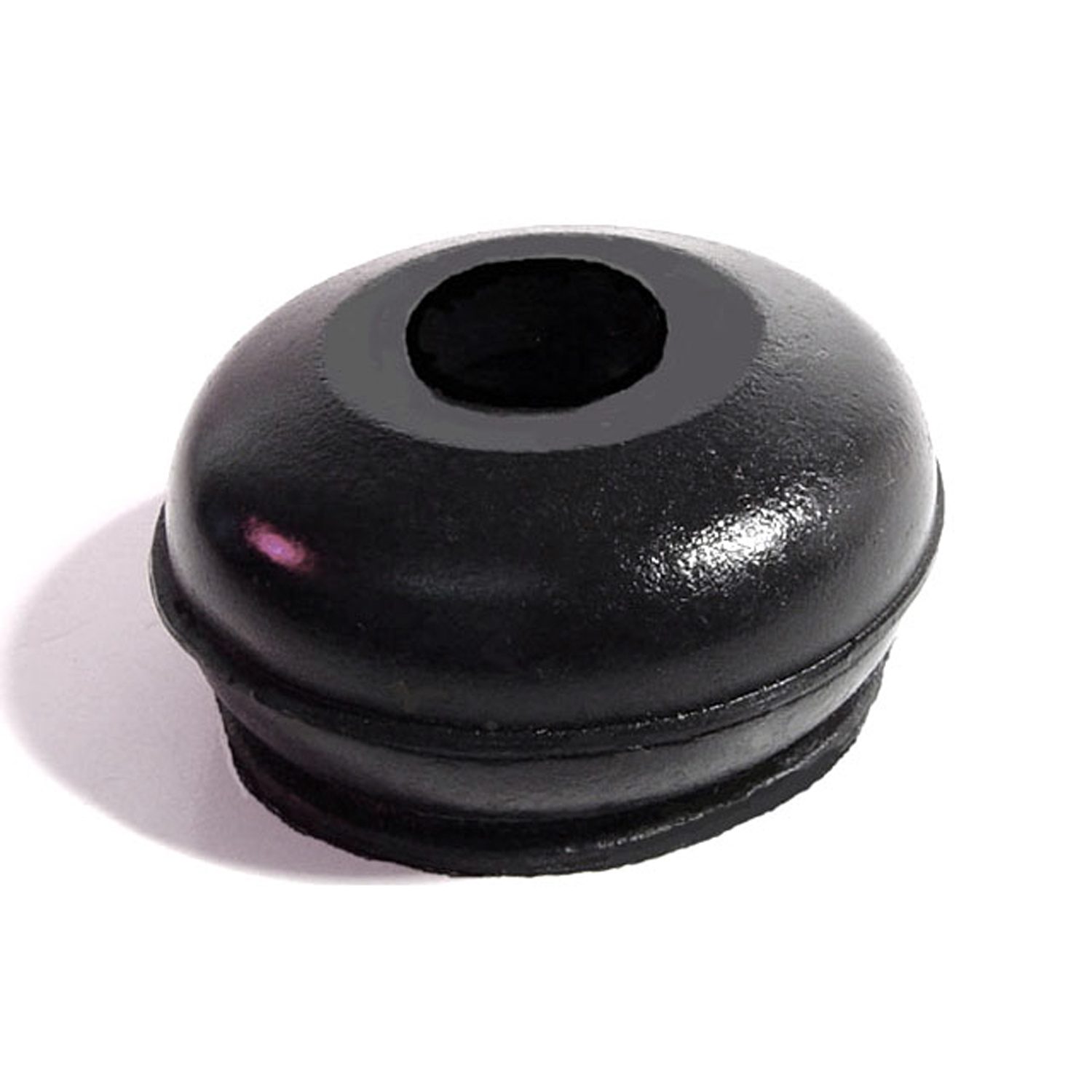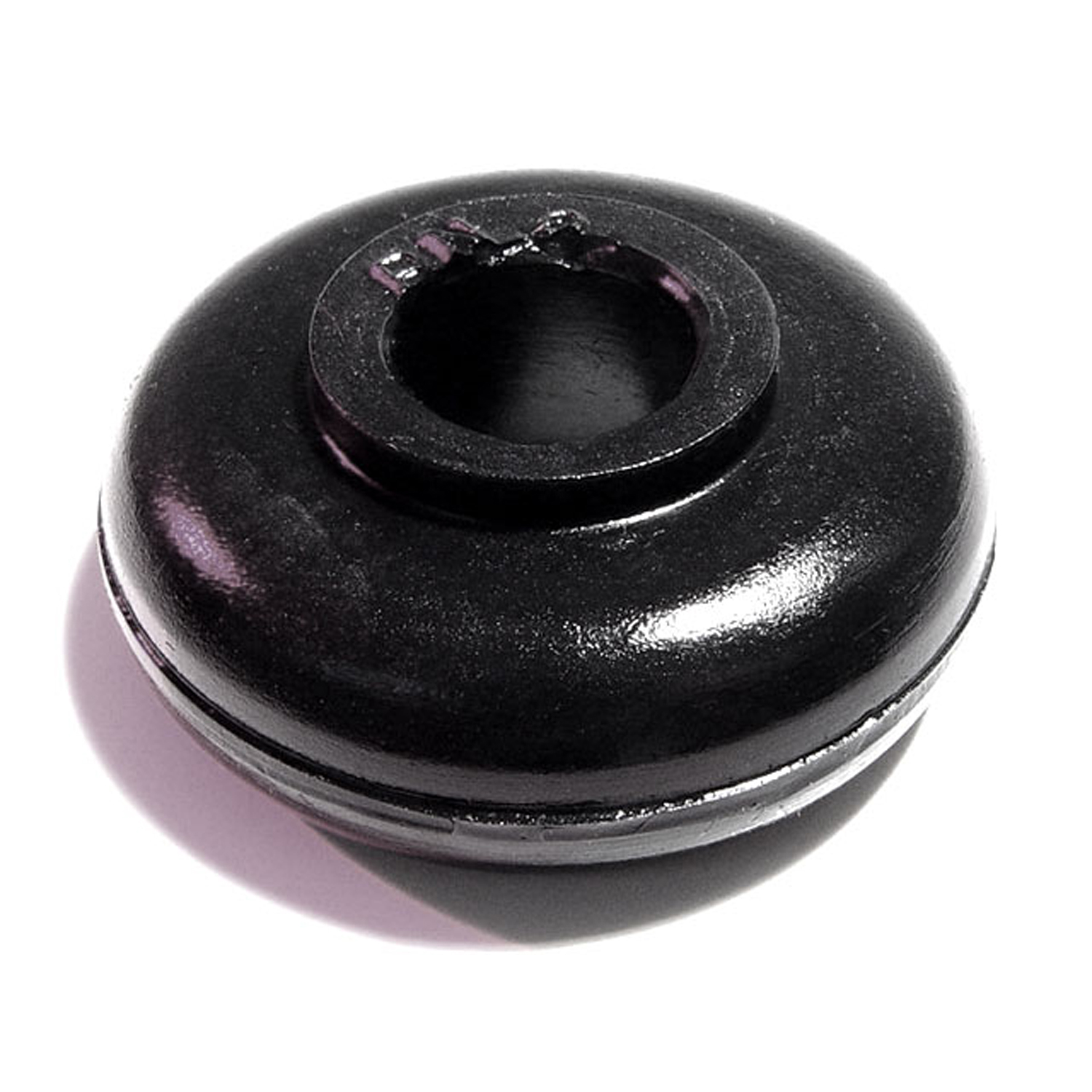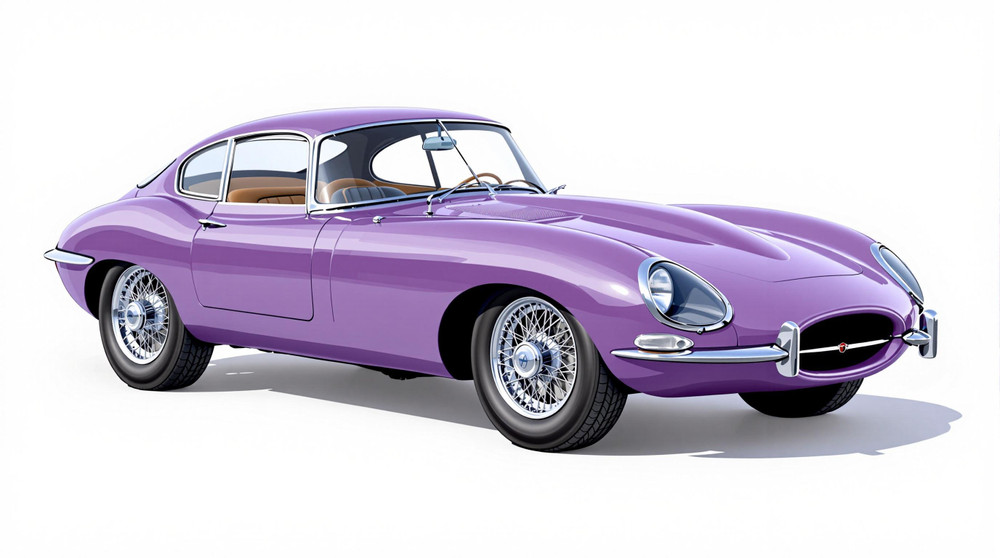Image of 1956 Jaguar D-Type, Note: These illustrations use artistic license and may differ from actual historical models.
Performance Metrics
Fundamental Metrics
Emotional Appeal
MMP Rating
| Engine Specifications | |
|---|---|
| Engine: | XK I6 |
| Displacement: | 3.4L |
| Horsepower: | 250-260 hp |
| Torque: | Estimated 242-250 lb-ft |
| Compression Ratio: | 9.0:1 |
| Ignition System: | Lucas ignition system |
| Cooling System: | Water-cooled |
| Performance Specifications | |
| 0-60 Time: | 4.7 seconds |
| 1/4 Mile Time: | Estimated 13.0 seconds |
| Top Speed: | 162 mph |
| Transmission and Drive | |
| Drive Type: | Rear-wheel drive |
| Transmission Type: | 4-speed manual |
| Fuel and Efficiency | |
| Fuel System Type: | Triple Weber 45 DCOE carburetors |
| MPG: | Estimated 15-20 mpg (due to the age and type of the vehicle, this is a rough estimate) |
| Dimensions and Brakes | |
| Brakes: | Disc brakes |
| Wheelbase: | 90 inches |
| Weight: | 2,100 lbs |
Note: Specifications for classic cars are given to the best of our ability, considering the limited and variant data available.
A Legend Reborn: The 1956 Jaguar D-Type
The 1956 Jaguar D-Type is not just a car; it's a rolling sculpture, a testament to the zenith of automotive engineering and design of its era. Born from the competitive fires of Le Mans, this British sports car was manufactured by Jaguar Cars Ltd. Known for its aviation-inspired design and state-of-the-art technology, the D-Type became an icon on both the road and the racetrack. Its unique fact? It was one of the first cars to employ monocoque construction, borrowing techniques from the aerospace industry to create a lighter and stronger body.
Design and Innovation
The D-Type's exterior styling was nothing short of revolutionary. Its long, flowing lines and distinctive tail fin were not just aesthetically pleasing but also aerodynamically efficient. The interior was a blend of luxury and purpose, with fine leather seats juxtaposed against a spartan dashboard that prioritized function over form. Technological features like its dry-sump lubrication system and disc brakes were ahead of their time, giving it an edge over competitors. While available in various colors, British Racing Green became synonymous with the D-Type, capturing the spirit of motorsports. The most iconic body style was undoubtedly the open-top roadster, which showcased the vehicle's sporty essence.
Historical Significance
The Jaguar D-Type's impact on automotive design is immeasurable. It set new standards for performance and aesthetics that influenced generations of sports cars. Its innovative use of monocoque construction changed how manufacturers approached vehicle design, paving the way for modern automotive engineering practices.
Performance and Handling
Underneath its sleek hood lay a 3.4-liter straight-six engine capable of propelling the D-Type to speeds exceeding 160 mph—a remarkable feat in its day. The sprint from 0-60 mph could be achieved in a hair-raising 4.7 seconds. On the road, it handled with grace and precision, responding eagerly to driver inputs while maintaining composure over imperfections in the tarmac. Driving a D-Type was an auditory delight as well; its engine note—a symphony of power and refinement—was music to any enthusiast's ears.
Ownership Experience
The D-Type was versatile enough to serve as a daily driver but truly shone as a show car or on the racetrack. Maintenance required a knowledgeable hand, but for those familiar with classic Jaguars, it was relatively straightforward. Reliability was commendable for a high-performance machine of its time.
Fun Facts
Did you know that only about 75 units of the D-Type were produced? This rarity adds to its allure among collectors. Celebrity owners have included Steve McQueen and Jay Leno. The D-Type also held records for speed and endurance during its heyday and made notable appearances in events like the Mille Miglia.
Collector's Information
Today, a well-preserved 1956 Jaguar D-Type can fetch anywhere from $5 million to over $10 million at auction, depending on its provenance and condition. Its value has steadily appreciated over time as collectors vie for a piece of automotive history.
Conclusion
The 1956 Jaguar D-Type stands as one of history's most significant automobiles—a blend of beauty, innovation, and performance that continues to captivate enthusiasts around the globe. Its legacy endures not just in collections or museums but in the indelible mark it left on automotive culture.
1956 Jaguar D-Type Catalog of Parts
 1956 Jaguar D-Type Upper and Lower Ball Joint Boot. 5/8" upper I.D-BN 101-AUpper and Lower Ball Joint Boot. 5/8" upper I.D., 1-1/2" bottom I.D., 7/8" high. Each
1956 Jaguar D-Type Upper and Lower Ball Joint Boot. 5/8" upper I.D-BN 101-AUpper and Lower Ball Joint Boot. 5/8" upper I.D., 1-1/2" bottom I.D., 7/8" high. Each 1956 Jaguar D-Type Roll Bar Bushing. 1/2" high, with 1/2" hole. Each-BN 2Roll Bar Bushing. 1/2" high, with 1/2" hole. Each
1956 Jaguar D-Type Roll Bar Bushing. 1/2" high, with 1/2" hole. Each-BN 2Roll Bar Bushing. 1/2" high, with 1/2" hole. Each 1956 Jaguar D-Type Auto Brake Pedal Pad. 3-1/4" wide X 5-1/2" long. Each-CB 75-BAuto Brake Pedal Pad. 3-1/4" wide X 5-1/2" long. Each
1956 Jaguar D-Type Auto Brake Pedal Pad. 3-1/4" wide X 5-1/2" long. Each-CB 75-BAuto Brake Pedal Pad. 3-1/4" wide X 5-1/2" long. Each 1956 Jaguar D-Type Spark plug wire boot. Exclusive Metro part-RP 1-KSpark plug wire boot. Exclusive Metro part. Fits on the distributor cap end. Note: looks similar to coil boot, but is physically smaller. Replaces OEM# CO 2609. Each.
1956 Jaguar D-Type Spark plug wire boot. Exclusive Metro part-RP 1-KSpark plug wire boot. Exclusive Metro part. Fits on the distributor cap end. Note: looks similar to coil boot, but is physically smaller. Replaces OEM# CO 2609. Each.Why Choose Metro?
For over 100 years, Metro Moulded Parts has been the pinnacle of quality in classic car restoration parts. Our commitment to precision and authenticity in every component ensures a perfect fit and an OEM-level appearance.
- Expert Craftsmanship & Quality: Each part is a testament to our dedication to reliability and perfection, crafted from original designs and thoroughly tested.
- Advanced Technology: We use cutting-edge techniques to create flawless, long-lasting parts that surpass others in performance.
- SuperSoft Sponge – The Ultimate Door Seal: Not only are our door seals 30% softer than competitors', but they're also guaranteed to never leak. They effectively reduce wind and road noise, enhancing your classic car's comfort and driving experience.
- Proudly American: Our parts are a product of American craftsmanship, made in the USA with a spirit of excellence and heritage.
- Unrivaled Warranty: We back our products with a 30-year industry-leading warranty, a testament to our confidence in their quality.
Join us in preserving the legacy of classic cars with parts that are crafted for perfection, not just made.

